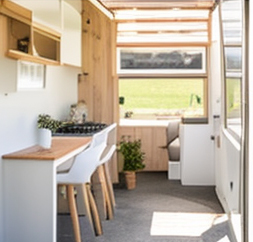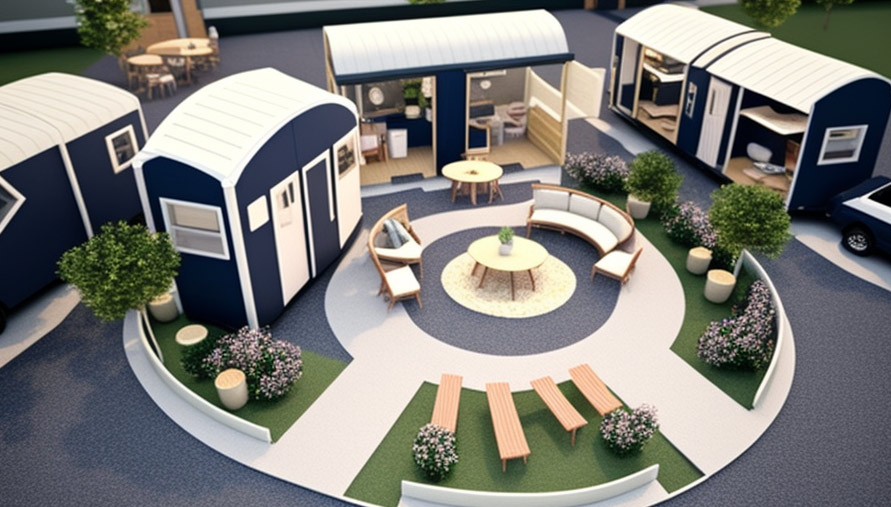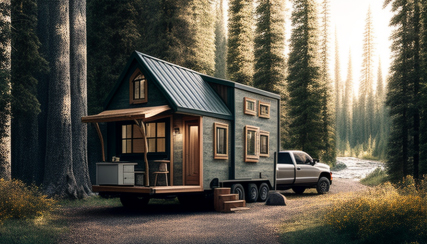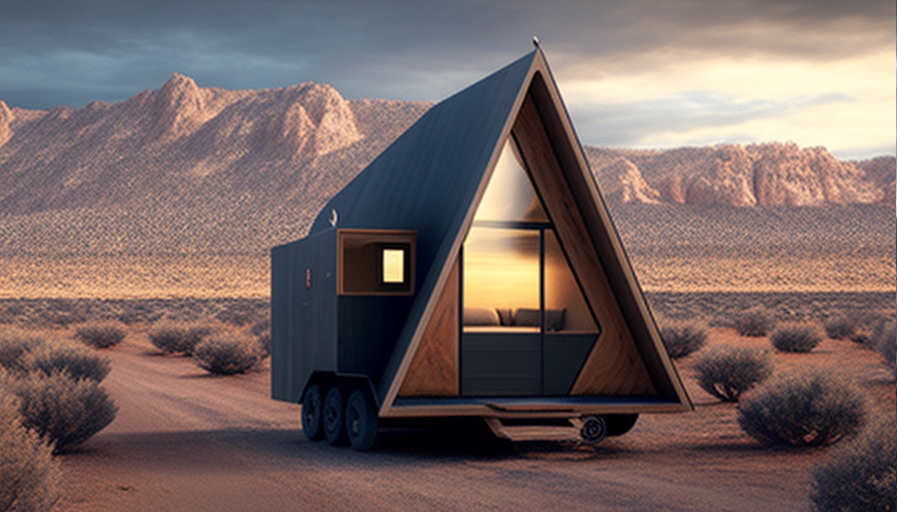Tiny Home Minimalism has gained immense popularity in recent years, with more and more people opting for a simplified lifestyle. The concept of minimalism is based on reducing clutter and focusing on the essentials, and this is reflected in the design and construction of minimalist homes. In this article, we will delve into the basics of minimalist homes, their benefits, and what makes them unique.

What is a Minimalist Home?
A minimalist home is a dwelling that has been designed and constructed with simplicity and functionality in mind. This type of home is characterized by a clean, uncluttered design with a focus on essential elements and functionality. The aim of minimalist homes is to create a space that is peaceful, calming, and free from distractions.
The Benefits of Tiny Home Minimalism
There are several benefits to choosing a minimalist home. Firstly, minimalist homes are generally smaller in size, which means that they are more energy-efficient and cost-effective to maintain. Secondly, minimalism encourages a focus on essential items, which means that homeowners are less likely to accumulate clutter and excess possessions. This results in a cleaner and more organized living environment. Thirdly, minimalist homes are typically designed with an emphasis on natural light and open spaces, which promotes a sense of calm and tranquility.

The Key Features of Minimalist Homes
Minimalist homes are defined by their clean, simple design and emphasis on essential elements. Here are some of the key features that make minimalist homes unique:
- Neutral color palette: Minimalist homes are typically decorated in a neutral color palette, which helps to create a sense of calm and tranquility.
- Clean lines: The design of minimalist homes is characterized by clean lines and a lack of ornamentation, which helps to create a sense of clarity and simplicity.
- Open spaces: Minimalist homes are often designed with open floor plans and large windows, which promote a sense of spaciousness and natural light.
- Multi-functional spaces: Minimalist homes are designed to be highly functional, with spaces that can be used for multiple purposes. For example, a dining room might also serve as a home office or workspace.
- Focus on essentials: Minimalist homes are designed to only include essential items, which helps to create a sense of simplicity and functionality.
Designing a Minimalist Home
Designing a minimalist home requires careful consideration of the layout, color palette, and materials used. It is important to focus on functionality, with the aim of creating a space that is easy to maintain and free from distractions. Here are some tips to help you design your minimalist home:

- Keep it simple: The key to a minimalist home is simplicity. Focus on the essentials and avoid adding unnecessary elements.
- Use neutral colors: Choose a neutral color palette to create a sense of calm and tranquility.
- Emphasize natural light: Use large windows and skylights to bring in natural light, which will help to create a sense of spaciousness and calm.
- Opt for multi-functional spaces: Design spaces that can be used for multiple purposes to maximize functionality.
- Avoid clutter: Minimalism is about reducing clutter, so make sure to keep your home organized and free from distractions.


